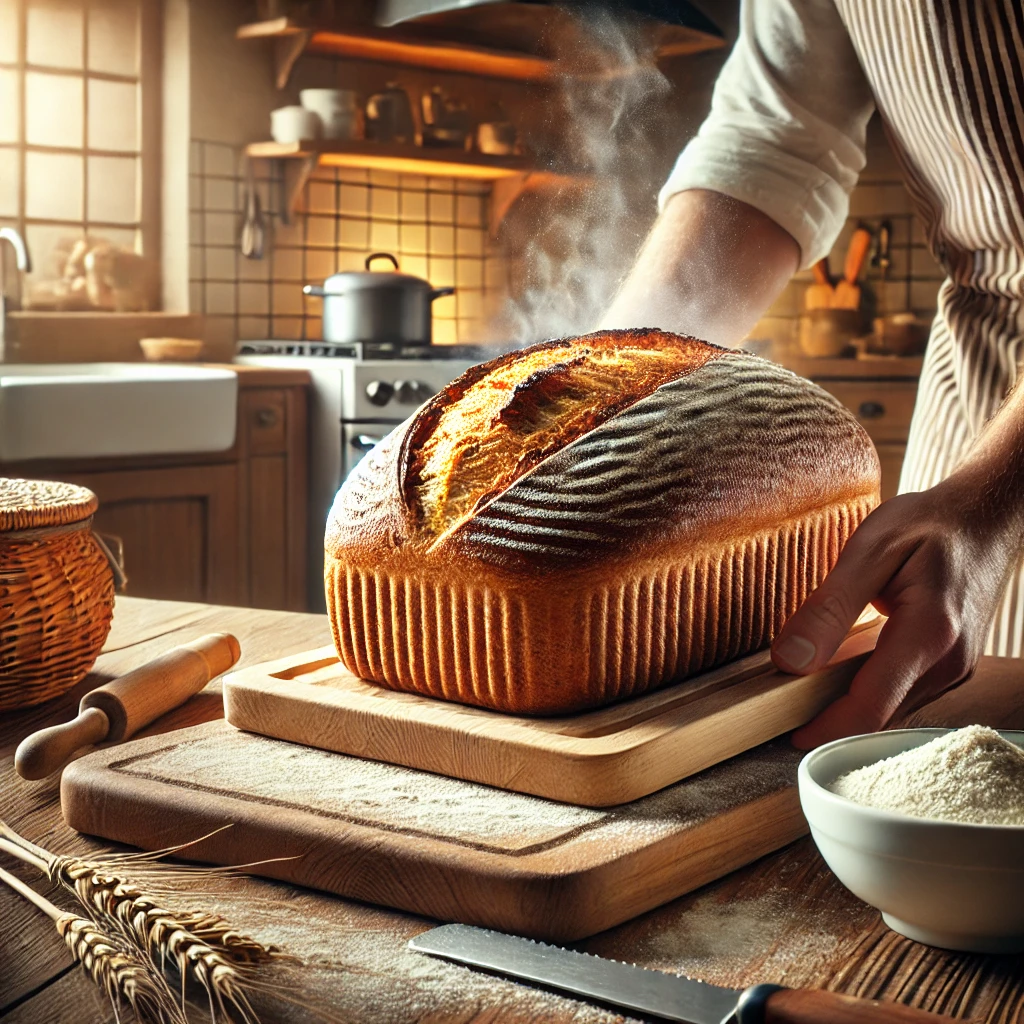Making homemade bread is often considered a magical experience, but there are some essential secrets that can elevate your bread to a whole new level. These tips are not always included in your typical recipe books or online tutorials, but they can make a significant difference in your baking journey.
- Use a Preferment (Biga, Poolish, or Sponge): One of the best-kept secrets of artisan bread is the use of preferments. A preferment is a mixture of flour, water, and a small amount of yeast that is allowed to ferment before mixing with the rest of the dough. This adds complexity and depth of flavor to your bread. It’s the same technique used by professional bakers to create that distinct, slightly tangy flavor and chewy texture in bread.
- Proper Hydration: The amount of water in your dough significantly affects the texture of your bread. Higher hydration doughs tend to produce a lighter, airier loaf with bigger holes. It’s important to find the right balance for the bread you want to create. If you want a crusty, open crumb bread, aim for a higher hydration dough.
- The Power of Resting Time: Bread dough needs time to relax. After mixing and kneading, it’s essential to give the dough a long resting period for fermentation. This is when the yeast works its magic and develops the flavors. You can allow the dough to rest in the fridge overnight, which helps to develop even more flavor.
- Don’t Skip the Stretch and Fold: Many beginner bakers skip the crucial technique of stretching and folding the dough. This simple step involves pulling the dough from the edges and folding it over itself at regular intervals. Stretch and fold helps to build the gluten network in the dough, which is essential for achieving the perfect rise and crumb structure.
- Use Steam During Baking: To get a golden, crispy crust, it’s important to introduce steam during the first few minutes of baking. You can achieve this by placing a pan of water in the oven or by misting the oven walls with water before putting the dough inside. Steam allows the bread to expand fully and creates a shiny, crisp crust.
- Know When to Stop Kneading: Over-kneading dough can result in tough bread. It’s essential to know when the dough has developed enough gluten and when it’s ready to rest. The “windowpane test” is a great way to check if your dough is ready. Stretch a small piece of dough between your fingers—if it forms a thin, translucent membrane without tearing, the dough is ready.
- Temperature Is Everything: The temperature of your dough, the environment, and the oven can drastically affect the outcome of your bread. Yeast thrives at temperatures between 75°F and 80°F (24°C to 27°C). If your kitchen is too cold, consider placing your dough in a warmer spot or using a proofing box to create the perfect environment for fermentation.
- Use a Dutch Oven for a Perfect Crust: If you don’t have a professional bread oven, using a Dutch oven can help simulate the ideal baking conditions. A covered pot traps the steam created by the dough, allowing the bread to rise evenly and develop a beautiful, golden-brown crust.
- Let It Cool Completely: It’s tempting to cut into your freshly baked bread right away, but allowing it to cool completely is crucial. If you slice into it too early, the bread may become gummy and dense. Cooling helps the bread finish cooking from the inside, allowing the crumb to set and making it easier to slice.
- Experiment and Have Fun: Baking bread is an art form. Don’t be afraid to experiment with different types of flour, additional ingredients (like herbs, seeds, or olives), or techniques. Every loaf is a learning experience, and with each bake, you’ll discover new ways to make your bread even better.
By incorporating these little-known secrets into your bread-making routine, you’ll soon be able to create bakery-quality loaves right from your own kitchen. Bread making is a process of trial and error, but with a little patience and these tips, you’ll be well on your way to mastering the craft.
